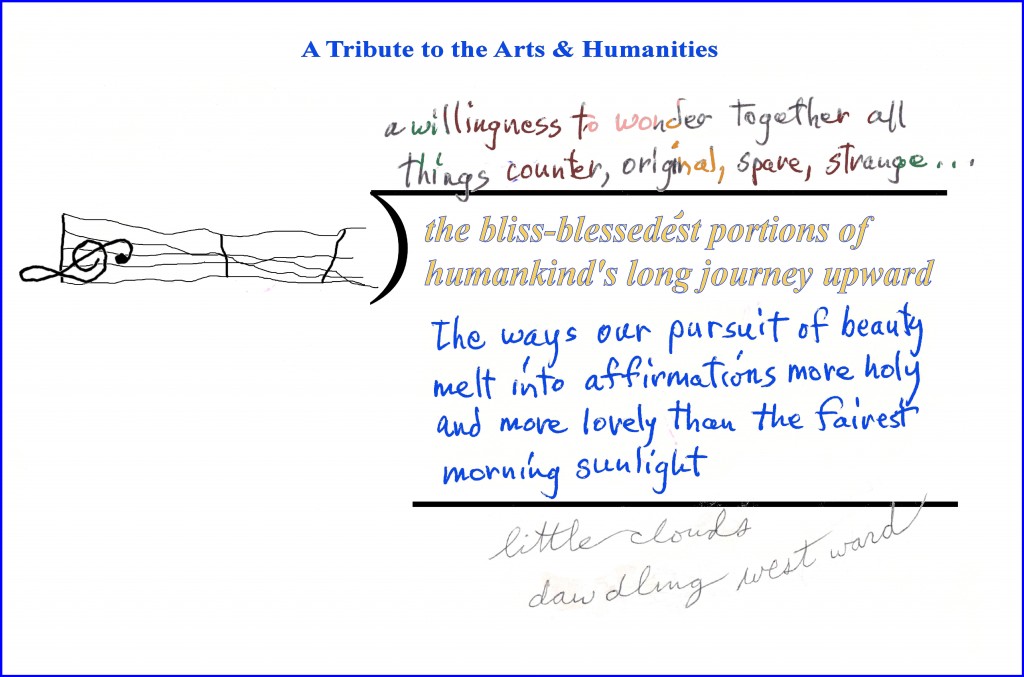I define on the basis of material details: what is materially
done in a poem, so I have trouble with statements like,
language poets are those poets “engaged pretty self-
consciously with the problematics of signification.” What
problems? How are they engaged–that is, how is their
engagement manifested in their poems?
I ignore who claims or is claimed by others to be or not be a
language poet. My concern is with poems that use what I
consider language poetry devices. Which I’m trying
haphazardly to list.
I’m gonna jump on you for this, Jerry–because I don’t think
you’ll take offense, and because you might say something
back that ain’t dumb. What’s “languagey” about Lauterback
or C. D. Wright’s work? I’m not baiting you or New-
Poetry. I’ve have trouble pinning down what language
poetry is, or should be, since my (belated) first exposure to
it around 1980. I’ve long since decided the jump-cut poetry
I think many poets have been doing since “The Wasteland”
is in any sense, “language” poetry.
Vaguely, I think of a language poem as something that
makes you consider the poetic effect of the non-prose, or
unconventional, punctuation, spelling, grammar of
something in a text. Cummings, for instance, when he
writes, “What if a much of a which of a wind,” or Gertrude
Stein when she wrote “rose is a rose is a rose.” Each
forcing a reader to consider what grammar is and does–
more than a poet using a noun as a verb as Dylan Thomas
beautifully does, say. Language-centering versus
language-heightening. To say a start to what I hope
someday about language poetry.
Saroyan’s “lighght” is, for me, a perfect example of a
language poem, although called a visual poem. What it
means as language is secondary; what counts is what it does
as language–to wit: make metaphoric use of the strange
fact that “gh” can be silent.
Another thought: that a language poem uses language for
more than denotation and connotation. It goes beyond what
can be done with those two things.
Hey, that may be my definition of language poetry: poetry
whose central aesthetic effect depends not of what its
language denotes or connotes but what it does.
> what it does?
> which leaves us what?
> diagraming sentences?
Diagramming sentences was one of the very few things I
liked doing in school. You wouldn’t need to do it here
unless your understanding of sentence structure is really
bad.
I think I can’t explain it to you, at least now, if my “lighght”
example doesn’t make sense to you. Think about what
makes it work as a pooem, if not for you, then for others
like me for whom it definitely works.
What makes it for me is what its “gh” is as a fragment of
language, not what it denotes or connotes (which is zero).
Think about Cummings’s “What if a much of a which of a
wind” and Stein’s “rose is a rose is a rose.” Neither is
anything without its abuse of syntax, and that abuse does
much more than simply distort a text sufficiently to slant it
interesting–the way the sentence I just typed does, or tries
to do–or the way an impressionistic painting distorts a
pretty scene enough to make it appealing to those capable
of appreciating it.
I think Stein’s passage does something important
neurophysiologically (according to my post-Chomskian
theory of linguistics): it disrupts the brain’s reception of
what the passage denotes in such a way as to let it start
again out of a blank context, which will give a reader (or
some readers) a feeling of the word, “rose,” which is much
closer to what most persons’ first experience of an actual
rose was than to something more conventional, like Burns’s
“My love is like a red, red rose” (although his expression
has other virtues).
I’m not sure about the Cummings passage, which I haven’t
thought about too deeply. I first made an intense analysis
of the Stein passage 30 years ago–in what I believe was my
first published piece of criticism, in my college literary
magazine.
The fact that this way of considering language poetry seems
to stymy you suggests to me that I may be on to something
of consequence (which is not to say I’m saying anything
original). A genuine poet or serious engagent of poetry
would be thrilled to discover words might be used to do
something more than denote, connote, appeal to the ears,
appeal to the eyes. A Philistine would feel threatened. Too
threatened to ask questions the way you are, Stephen. For
which, I thank you.
I believe many poets called language poets just assaulted
grammar in their poems for the sake of problematizing
language, which they took to be a way to opposing the
political status quo. Many didn’t have any aesthetic
motives, being (I strongly suspect) almost bereft of
aesthetic sensitivity. Not that their accidents, like many of
the accidents of the Dadaists, couldn’t be put to far betters
uses than they were able to.

